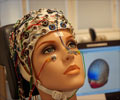Researchers at University of Toronto revealed that they have identified key proteins that play an important role in neurological disorders.

This complex brings together three key proteins – KCC2, Neto2 and GluK2 – required for inhibitory and excitatory synaptic communication. KCC2 is required for inhibitory impulses, GluK2 is a receptor for the main excitatory transmitter glutamate, and Neto2 is an auxiliary protein that interacts with both KCC2 and GluK2. The discovery of the complex of three proteins is path-breaking as it was previously believed that KCC2 and GluK2 were in separate compartments of the cell and acted independently of each other.
"Finding that they are all directly interacting and can co-regulate each other's function reveals for the first time a system that can mediate excitation-inhibition balance among neurons themselves," said Vivek Mahadevan, a PhD candidate in Woodin's group and lead author of the study.
Mahadevan and fellow researchers made the discovery via biochemistry, fluorescence imaging and electrophysiology experiments on mice brains. The most fruitful technique was the application of an advanced sensitive gel system to determine native protein complexes in neurons, called Blue Native PAGE. The process provided the biochemical conditions necessary to preserve the protein complexes that normally exist in neurons. Blue Native PAGE is advantageous over standard gel electrophoresis, where proteins are separated from their normal protein complexes based on their molecular weights.
"The results reveal the proteins that can be targeted by drug manufacturers in order to reset imbalances that occur in neurological disorders such as epilepsy, autism spectrum disorder, schizophrenia and neuropathic pain," said Woodin. "There is no cure for epilepsy; the best available treatments only control its effects, such as convulsions and seizures. We can now imagine preventing them from occurring in the first place."
"It was the cellular mechanisms that determine the excitation-inhibition balance that needed to be identified. Now that we know the key role played by KCC2 in moderating excitatory activity, further research can be done into its occasional dysfunction and how it can also be regulated by excitatory impulses," said Mahadevan.
Source-Eurekalert
 MEDINDIA
MEDINDIA



 Email
Email










